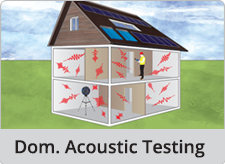Offices Nationwide
• Glasgow
• Newcastle
• Manchester
• Portsmouth
• Wakefield
• Sheffield
• Birmingham
• Wrexham
• Cardiff
• Peterborough
• Milton Keynes
• London
• Plymouth
• Anglesey
• Glasgow
• Newcastle
• Manchester
• Portsmouth
• Wakefield
• Sheffield

Air Testing & Leakage
We can offer additional services at discounted rates along side our tests! These are Sound Testing and Part F. Ask our Consultants for more

How loud is too loud?
Noise above 85 dBA over time will cause hearing loss. In general, the louder the noise, the less time required before hearing loss...more
Thermal Bridging And Airtightness
Enhanced Construction Details

Stirling - Room Integrity Testing - 0141 894 0107
The office that covers this area is: Glasgow
Phone Number: 0141 894 0107 Email: stirling@e2consultants.co.uk
Our other services include:
Room Integrity Testing can also be known as:
Server Room Testing, Fire Suppression Room Integrity Testing, Fire Suppression Testing,


Copyright 2025 E2 Specialist Consultants Limited
Company No. 06728970








































